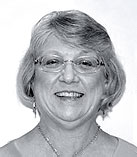Seeing, Hearing, and Discovering Civilization - Reflections by Barbara Brown
Blog Category:
When I was thirteen I had a dream. In the dream I was given a challenge; if I could “find” civilization, my life –and everyone else’s life- would be longer and better. I have been searching for “civilization” for 53 years. I have seen glimpses of civilization throughout my life, when someone helps someone and they do not have to, when a small child speaks wisdom beyond that of the surrounding adults, when there is a disaster and people get to work and rebuild, and in June of 2015 I saw civilization in South Carolina, in Charleston and throughout America. We have all felt the sadness and grief stemming from the hate aimed at the “Charleston Nine” and many – I hope most- have felt love for the nine, their families, and each other and wanted to demonstrate this love.
Local and national media has captured the unity – the black and white hand in clasps of mutuality, the black arms and white arms wrapped around each other trying to give comfort, white people in black churches, and the expressions of joy. The word used to describe the phenomena we are encountering is grace. The people of Charleston, the people of South Carolina, many (if not all) of us are demonstrating grace. An internet definition of grace1 is that it is a gift from God, divine assistance given to humans for their regeneration. We do not earn it, it is a gift. To me, it looks a lot like civilization.
One local media anchor interviewed a young Charlestonian who identified herself as a white ally – seemingly referring to her commitment to support her black neighbors. She said, [Maybe now]…”we can take risk with a full heart.”
And, a white man said, “We are coming together as I have never seen before.”
Another local news anchor said people came out of the memorial service feeling uplifted, inspired, and empowered, and a CNN anchor spoke of grace along with its definition.
What we are seeing and the words we are hearing is giving hope that the vestiges of racism in America can be overcome. Black and white are unified visually as well as with the rhetoric we are hearing. The scene is refreshing and the melody is beautiful. We are finding a place where everyone can work together on some of the great challenges of our time, and it looks a lot like civilization. My wishes are big; my hope is invigorated.
One concept reinforced with the current national rhetoric on the Confederate flag flying on the grounds of the South Carolina State House is the importance of symbols to our cultural and personal psyche and the impact they have on our lives. Our South Carolina, Southern, psyche no longer has room for this flag. Our newly enlightened “civilization” no longer has room for an image that has taken on a connotation of hatred, bigotry, and violence. We have drawn (seen) the “last straw that has broken the camel’s (the slaves’) back”2 as the old saying is juxtaposed along-side our current events.
My granddaughter is currently thirteen and this year I have borrowed a title of a painting she and her mother created, “Wishes, Hope, Happens.”3 It has become a personal mantra of mine and now I share it with all. It represents an attitude and is a theme for tomorrow ringing through the nation. My wish is that through the grace demonstrated, the outpouring of good will, and the intentions of strong hearts in Charleston, South Carolina, and America, we will find civilization. My hope is that it will happen. Citizens can achieve so much, if in spite of our differences, we can work together for the common good. In humble love, charity, and grace I am. By: Barbara A Brown
- Grace, see: http://www.merriam-webster.com/dictionary/grace
- Originally an Arab phrase and used in the 19th century by Charles Dickens, see: https://thewurdturtle365.wordpress.com/2012/01/24/the-straw-that-broke-the-camels-back/
- “Wishes, Hope, Happens” By: Seika and Noriko Brown
Barbara Brown is a member of the National Issues Forums Institute (NIFI), and serves as a Founding Director and the Chief Executive Officer of the non-profit Citizens Center for Public Life. Brown recently retired after serving 25 years for Clemson’s Cooperative Extension Service where she managed and researched programs aimed at serving vulnerable audiences –such programs as Visions for Youth; Children, Youth, and Families at Risk; and Operation Military Kids. Currently she is working to eliminate hunger and reduce extreme poverty both locally and globally simultaneously.


Comments
Appreciated reflections
Thank you for sharing this, Barb. I appreciate your thoughtful comments.